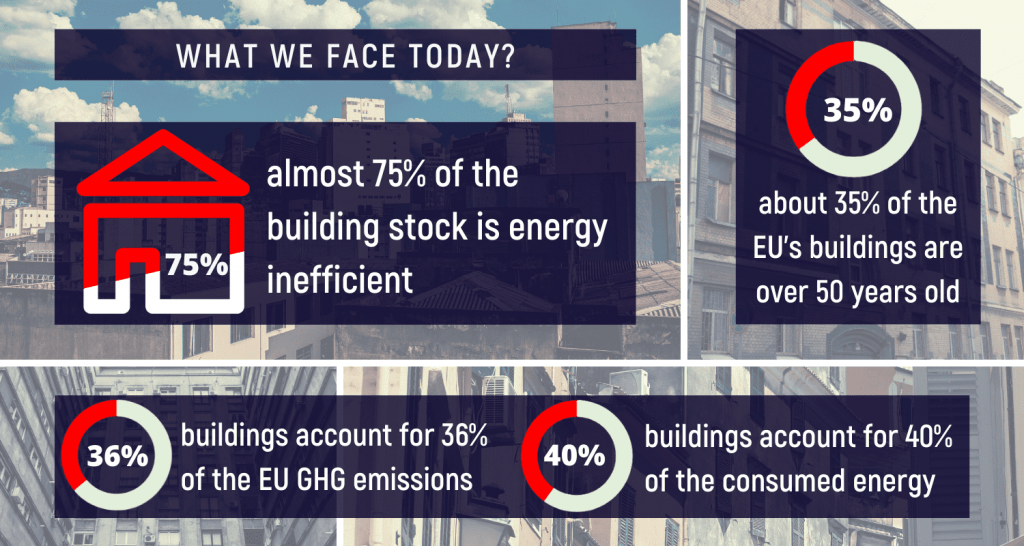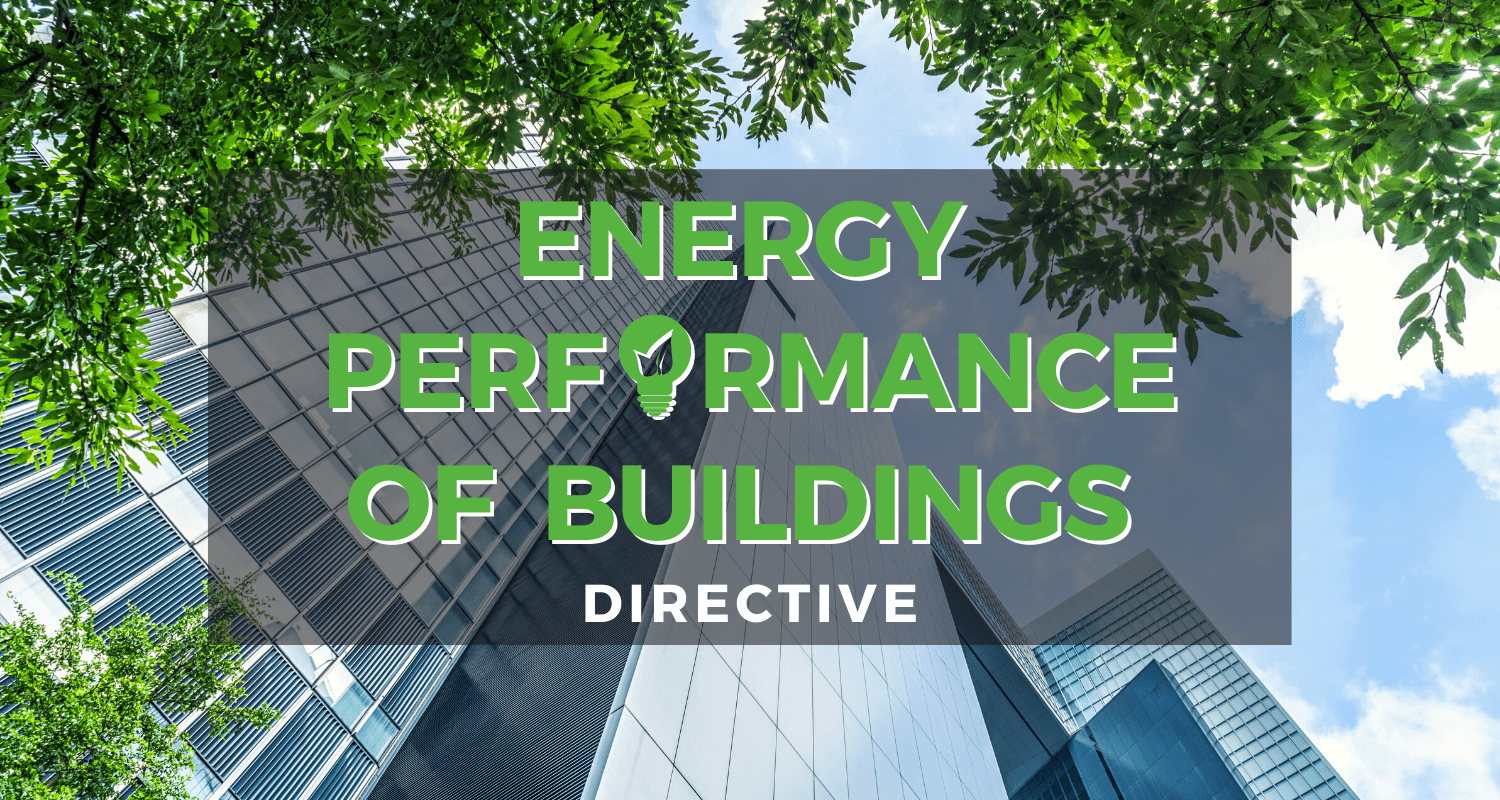To achieve its environmental goals, the European Union is now taking confident steps towards improving the energy performance of buildings. Additionally, energy-efficient buildings will have a positive impact on citizens’ wellbeing and nevertheless, the processes related to the climate transition will encourage the green economy.
According to reports from the ”Smart Finance For Smart Buildings” initiative, buildings accredit for 40% of all consumed energy and generate 36% of the EU GHG emissions. Overall, 75% of the housing stock is energy inefficient and the renovation rate is too low (~1%/year).
To accelerate the energy performance of buildings, the EU enforced the Energy Performance of Buildings Directive 2010/31/EU (EPBD) and the Energy Efficiency Directive 2012/27/EU. Ten years ago, both of the directives were meant to foster policies that will help achieve a highly energy-efficient and decarbonised building stock by 2050. Today, buildings consume only half as much as typical buildings from the 1980s, but more efforts and clear actions are still needed.
Energy Efficiency Directive amendments on the horizon
In October last year, the Commission introduced its renovation wave strategy, as part of the European Green Deal. The strategy contains an action plan with more solid regulatory, financing, and enabling measures to increase the pace at which buildings are being renovated. The EU goal is to at least double renovations towards energy efficiency by 2030.
And with the new Strategy goals, a revision of the Energy Performance of Buildings Directive has become of critical importance. Last month, the Commission held a public consultation to gather the views of stakeholders that would feed into a new legislative proposal planned for the end of this year.

Improving the energy performance of buildings
The EPBD has introduced some measures that help national governments boost the energy performance of buildings. Those include:
- EU countries must establish long-term renovation strategies, aiming at decarbonising the national building stocks by 2050, with indicative milestones for 2030, 2040 and 2050.
- EU countries must introduce cost-optimal minimum energy performance requirements for new buildings, for existing buildings undergoing renovations.
- All new buildings must be nearly zero-energy buildings (NZEB) from 31 December 2020.
- Energy performance certificates must be issued when a building is sold or rented, and inspection schemes for heating and air-conditioning systems must be established.
- Installation of building automation and control systems that regulate temperature at room level is encouraged as well as devices that monitor air quality and ventilation.
New Standards for Energy performance of buildings
To facilitate compliance with the EPBD, the Commission has established a set of standards along with technical reports to support the energy performance of buildings standards (EPB standards).
The European Committee for Standardisation (CEN) is the overseeing body. Currently, five standards are establishing a comprehensive framework for assessing the energy performance of new and existing buildings (EPB), EPB indicators, ratings, including labels.
Nevertheless, with the proper regulatory framework and standards in place, the EU is also encouraging investments in energy efficiency, especially in the construction industry. And the latter is said to generate about 9% of Europe’s GDP and directly account for 18 million jobs. SMEs, which contribute more than 70% of the value-added in the EU’s building sector, can also benefit from the augmented renovation market.
Green buildings are the future. If you are looking to make your property more sustainable and healthy for visitors and users, we can help. The right solution is one call away.





